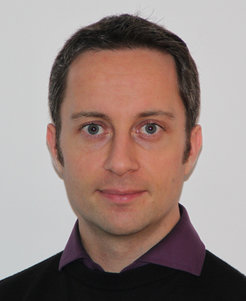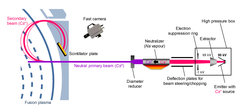Structure formation at the edge of hot plasmas
IPP physicist appointed head of Helmholtz Young Investigators Group
IPP scientist Dr. Gregor Birkenmeier is one of 16 young research scientists now selected by the Helmholtz Association to establish their own research group.

IPP scientist Dr. Gregor Birkenmeier is one of 16 young research scientists now selected from 360 applicants by the Helmholtz Association to establish their own research group. This was preceded by a competition procedure at various levels involving external expertises.
Gregor Birkenmeier, born in 1981 in Freiburg, will run his Non-linear Dynamics and Structure Formation at the Edge of High-temperature Plasmas group to clarify the complex processes at the edge of fusion plasmas. In this zone the hot inner plasma core, which is completely magnetically confined, moves over into the colder outer scrape-off layer, which comes into contact with the vessel wall. The properties of the plasma edge therefore govern whether the vessel wall can be damaged by overheating or erosion.
In the boundary layer of the plasma little eddies transport heat and particles out into the wall, thus impairing the thermal insulation of the plasma. Non-linear effects and steep temperature and density drops induce, however, flows and burst-like events in the plasma edge, which react on the turbulence. If, for example, there is strong shear flow, a barrier can spontaneously form at the plasma edge, thus impeding heat and particle motion; this enhances the thermal insulation, which is important for the economy of a future fusion power plant. What triggers formation and disruption of this barrier is, however, not yet fully clarified.

Testing theoretical models calls for exact measured data, such as the electrostatic potential and the edge current density. A novel heavy-ion probe should be of further help here. The group is to collaborate with the University of Seville to show the feasibility of the new diagnostic and do measurements with the highest possible temporal resolution. Gregor Birkenmeier will be supported in this work by the Helmholtz Association with an annual 150,000 euros for six years.
Including this year’s, fourteenth, selection round, the Helmholtz Association has hitherto brought 225 young scientists groups into being. The costs are shared by the site institute and Helmholtz Association, of which IPP is a member.

